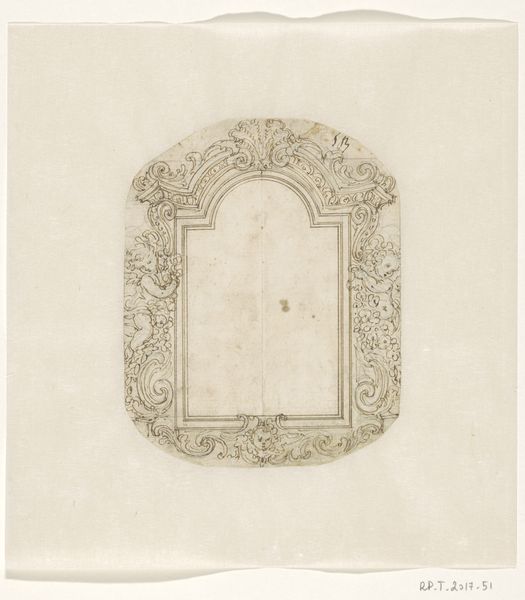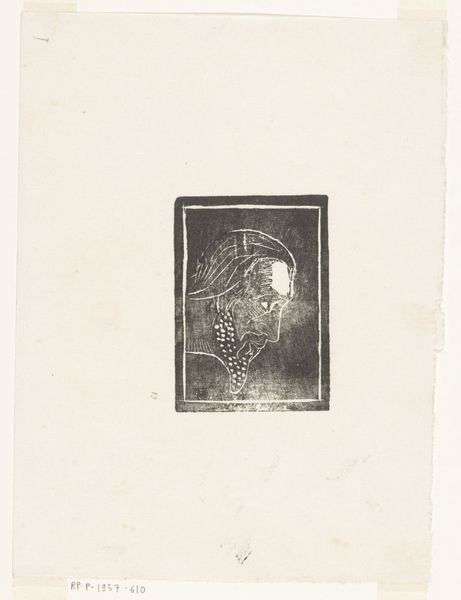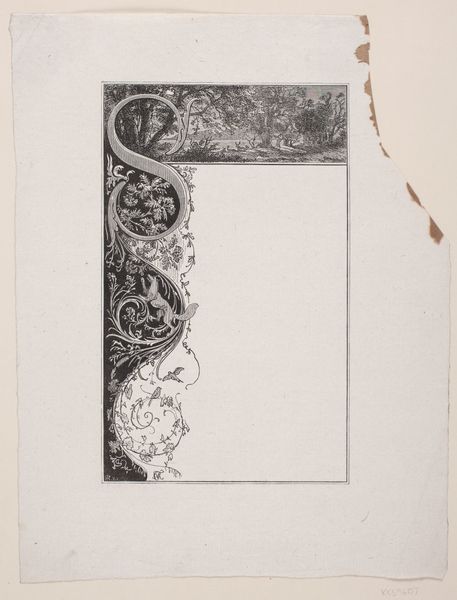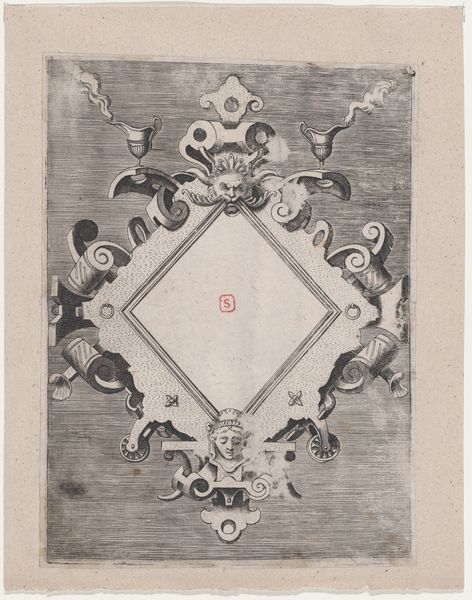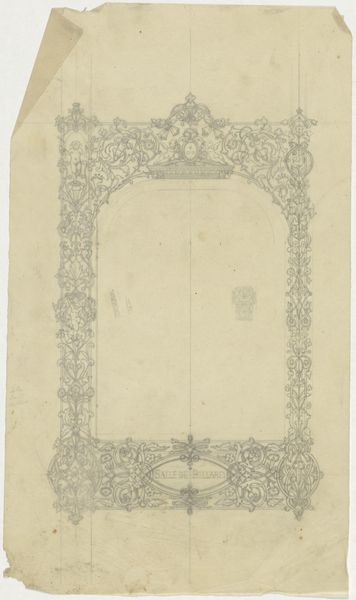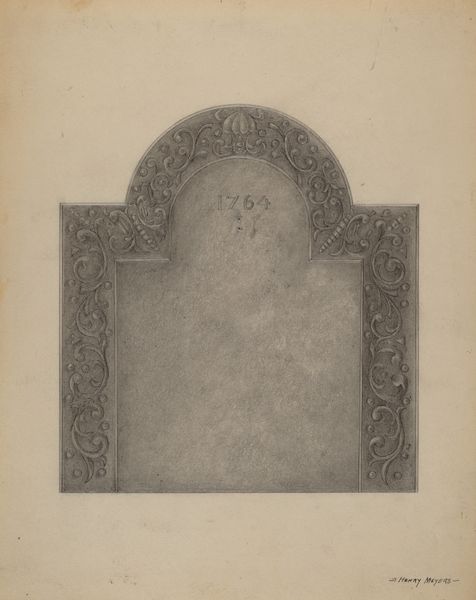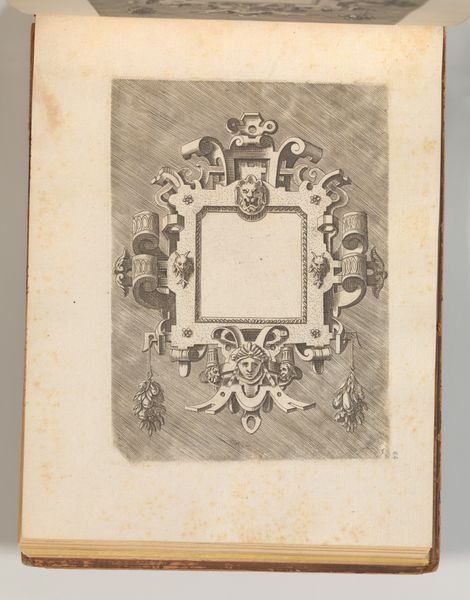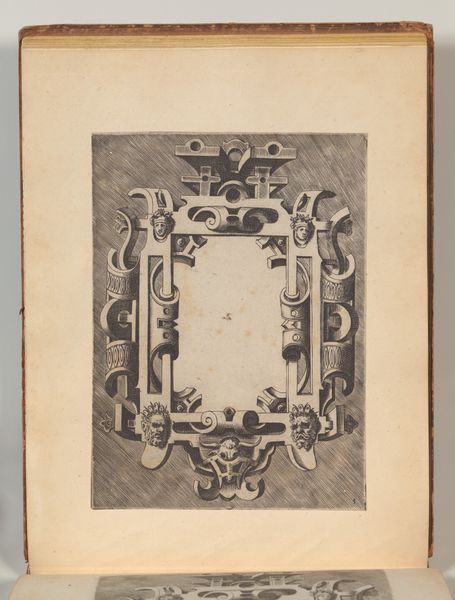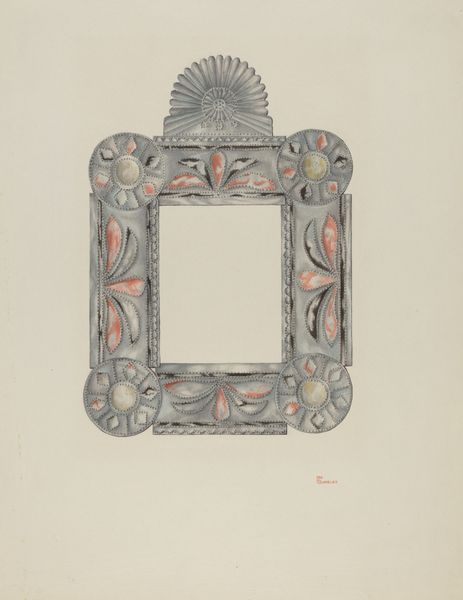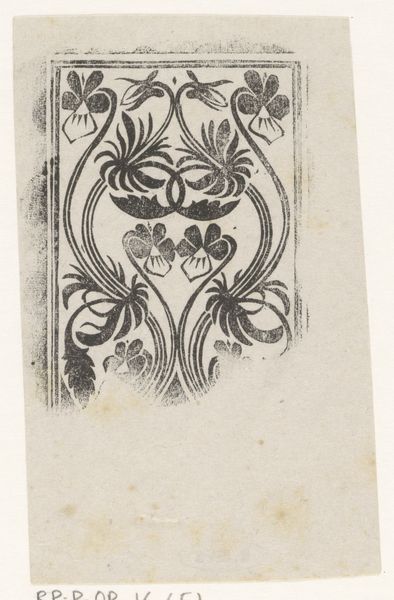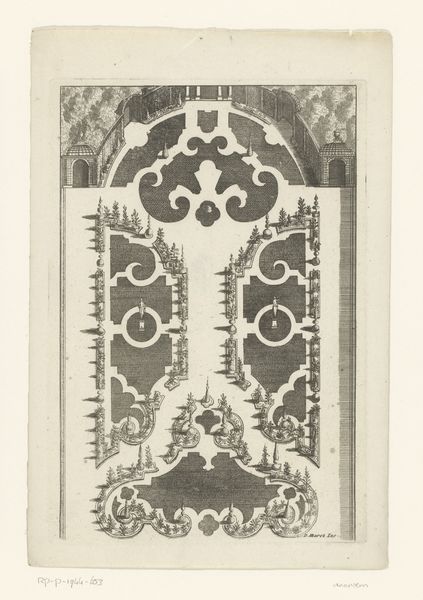
Indramningstegning til Adam Oehlenschläger, Aladdin 1893 - 1899
0:00
0:00
drawing, print, paper, ink
#
drawing
#
organic
#
art-nouveau
#
ink painting
# print
#
paper
#
ink
#
geometric
#
line
#
watercolour illustration
#
decorative-art
Dimensions: 226 mm (height) x 179 mm (width) (billedmaal)
Curator: What immediately grabs me is the overall symmetry and sense of contained energy—there's almost an explosive life held carefully within the graphic structure. What do you make of it? Editor: To understand this energy, consider the historical context. We're looking at Waldemar Böhme's "Indramningstegning til Adam Oehlenschläger, Aladdin", dating from 1893-1899. Böhme created this framing drawing, using ink and print on paper, in a period deeply influenced by Art Nouveau. Its very creation as a frame speaks volumes about artistic production at the time, where the border became as significant as the art it contained, challenging traditional notions of the "center". Curator: The prevalence of organic imagery is certainly indicative of the Art Nouveau period; notice the grapes, leaves and flowing lines. It almost evokes a Garden of Eden. Do you sense similar themes? Editor: Undoubtedly, and the light source at the top lends a spiritual air to it. Given the title's reference to Aladdin, I wonder if this light and surrounding fruits and plants symbolize enlightenment and prosperity? The "frame" feels like it's ready to contain something precious, a central scene resonant with such themes. What might the visual weight of those symbolic representations carry for the artwork or text being framed? What meaning gets created or restricted by that loaded border? Curator: Interesting questions. The lamp at the apex of the arch seems to represent divine inspiration, its rays casting down upon the space ready to be filled, almost blessing or sanctifying whatever will reside in the artwork’s center. I think it's also very cleverly composed; all these densely wrought organic figures forming this almost severe geometric structure. Editor: Yes, there is tension created between that organic profusion and the geometric control of the border; and to push a little on this point, I see this tension as exemplary of art production at the time; a period caught between a desire for wild beauty, and a demand for order, as a result of social upheaval and technological advancement. This "frame" almost looks like the bars of a gilded cage. Curator: I think you might be right, there. I've certainly reconsidered some of my own preconceptions, examining this artwork in a social framework, but considering both symbol and societal function seems useful. Editor: Agreed, viewing it through multiple perspectives opens new doors to this fascinating piece. It almost becomes a meditation on the nature of containment itself, doesn’t it?
Comments
No comments
Be the first to comment and join the conversation on the ultimate creative platform.
